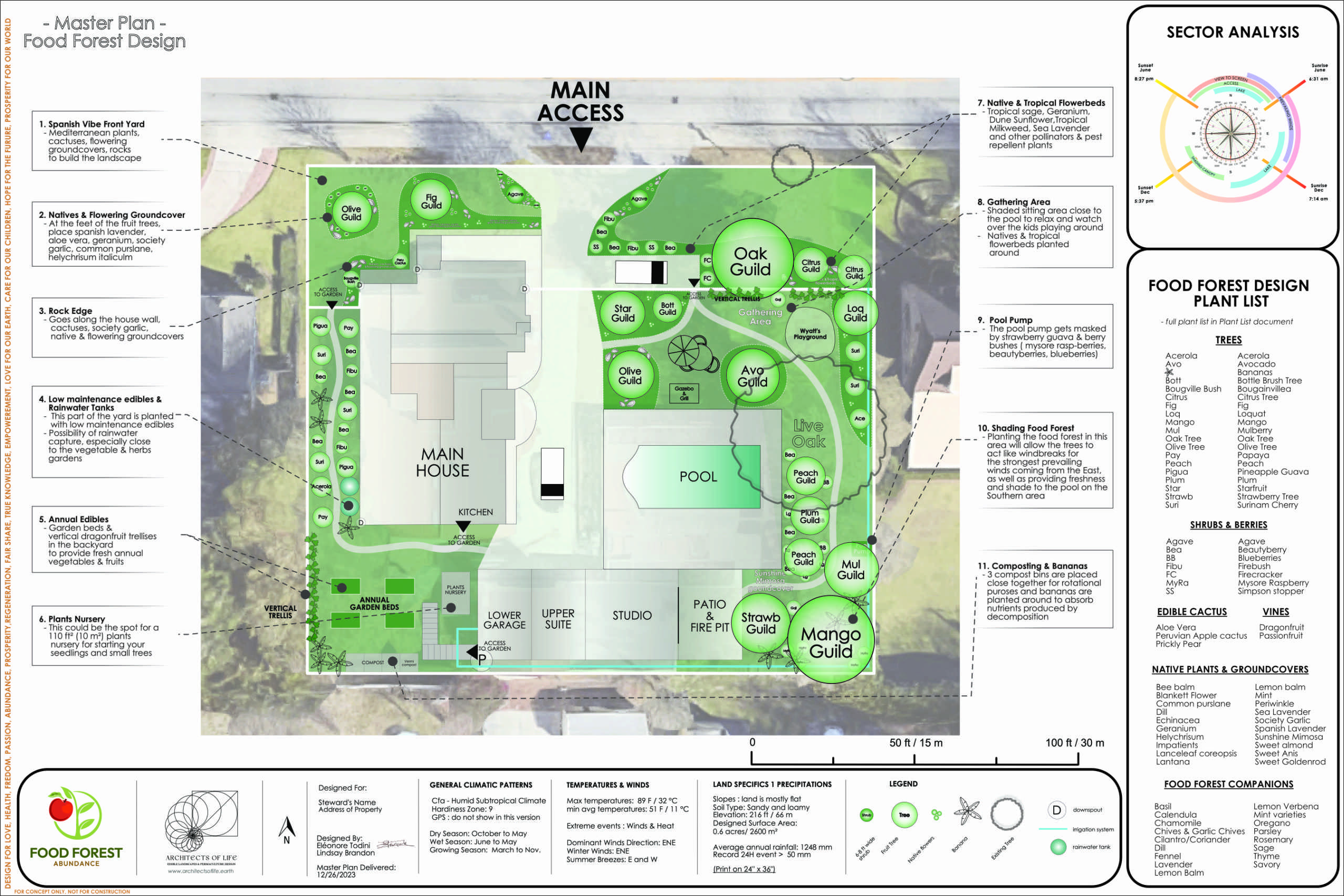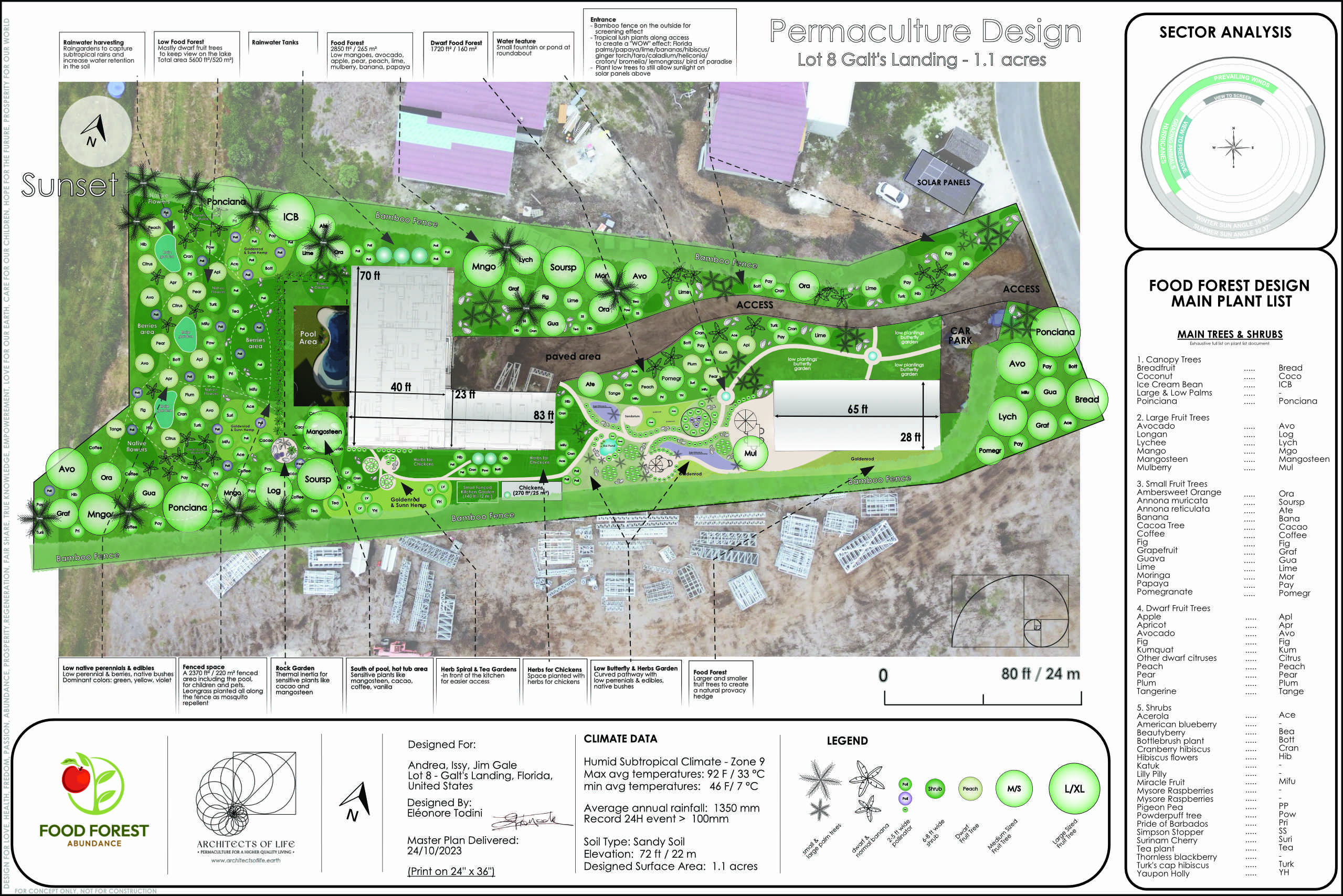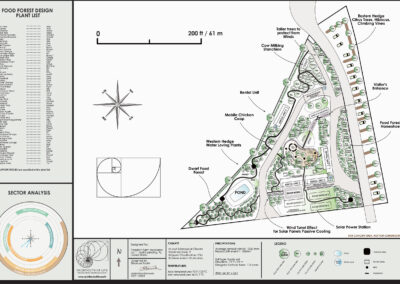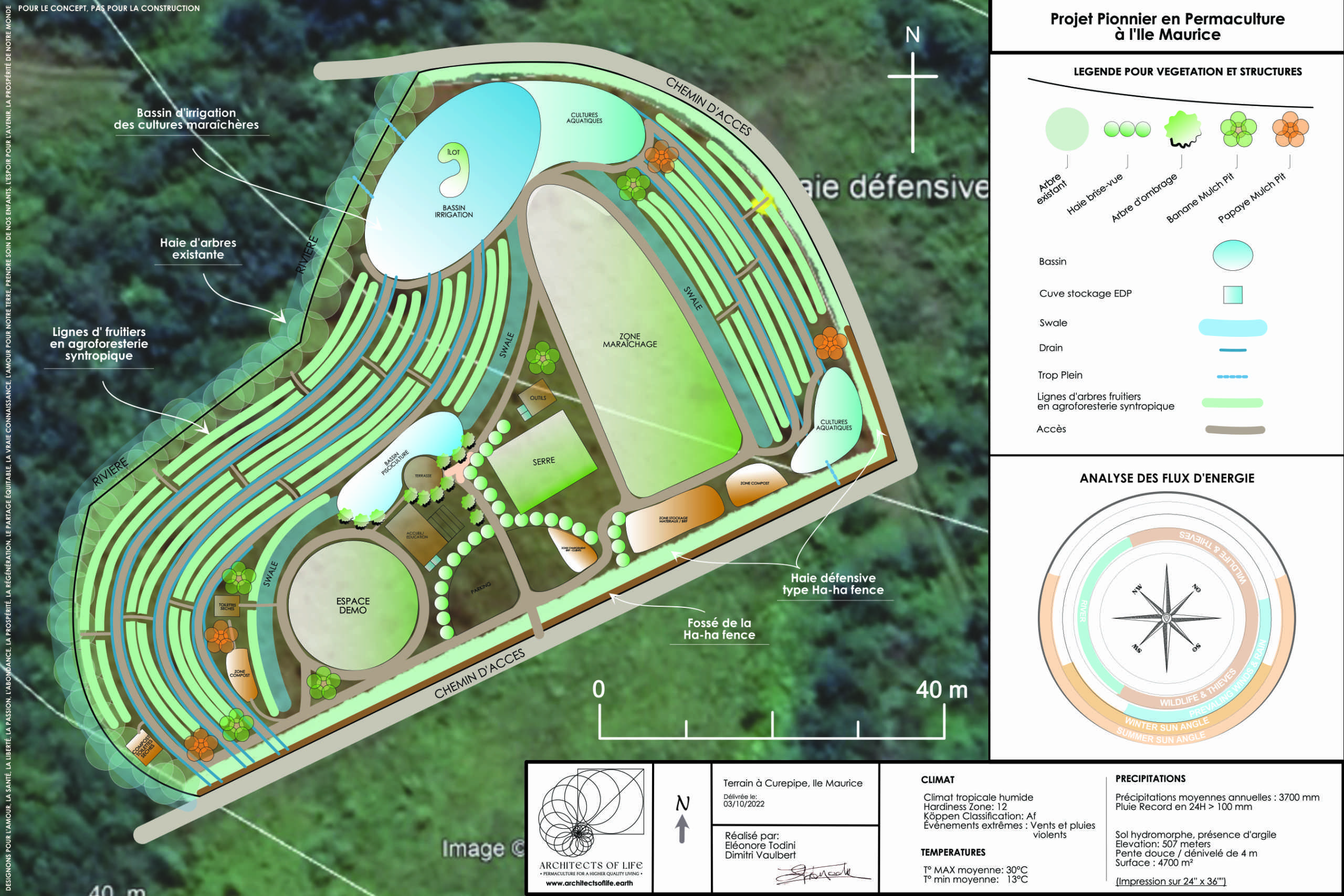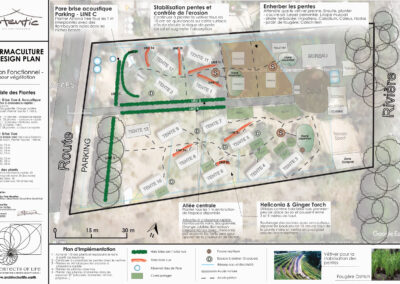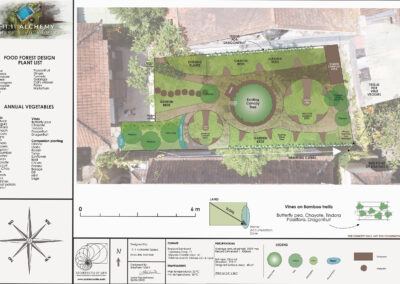regenerative landscape design of a FOOD BANK in TEXAS – US
The 3 main goals of this food bank serving 40 000 customers in Texas are to produce as much fresh food as possible, process locally 50 kg of daily food waste and propose education on site on a 1.2 hectares land.
The total 1.2 hectares of land are made of heavily compacted soil. We had to first think on how to regenerate the soil food web, before even starting to produce on site. Therefore, soil rehabilitation strategies such as decompaction mulch pools and rain gardens have been introduced to maximise use of food scraps while capturing maximum amounts of water. Fast growing pioneer vegetation is mixed up with hardy local fruit trees, bringing shade while limiting total evaporation in summertime. Roof water catchment systems are also designed in numbers, to prioritise use of rainfall over city water, for crops irrigation.
Finally, the interconnection between the upper and lower space is meant to transport nutrients from uphill (compost station) to downhill, passing through different growing systems – garden beds, productive rain gardens, fruit trees. The project will be implemented in fall 2023.
Design Collaboration: Eléonore Todini, Cynthia Acebo, Filippo Ceschi, Annette Agrabright, Lindsay Brandon, Food Forest Abundance
Some elements and features of the design phase:
– food growing systems: vegetable production, garden beds, food forest,
– water features: rain gardens, rainwater tanks, crop irrigation, drains,
– soil decompaction: mulch decompaction pools, rain gardens, fast growing pioneer trees, composting station, recycling food waste



